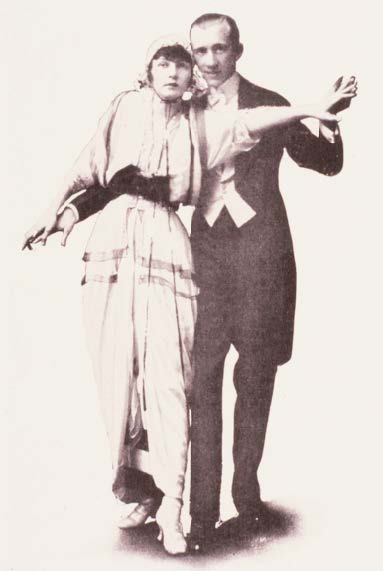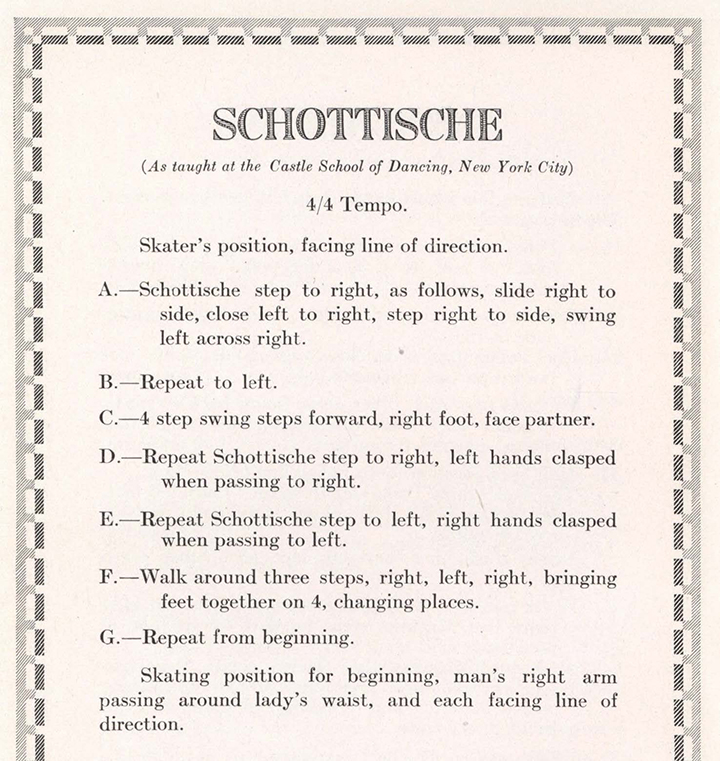The Castle Schottische
Originally "The Schottische, as taught at the Castle School of Dancing" From Victor Records For Dancing, with dance descriptions by Vernon and Irene Castle (shown at right), 1915.
Renamed "Castle Schottische" in Dancing Without A Master, Royal Publishing Company, c.1915.
Reconstruction by Richard Powers

Take Skater's Position, couples facing LOD. Footwork is the same for man and woman.
Part I
Bars
1 Glide R foot diagonally to R, close L foot to R foot, glide R foot diagonally to R, swing L over R.
1 Repeat counts 1-4 with opposite footwork in opposite diagonal, LOD.
1 Step forward R foot, swing L over R; step forward L foot, swing R over L,
1 Repeat last measure, on last beat turn to face partner, man facing out, woman facing in.
Part II
1 Keeping L hands, step R foot to R side, close L foot to R, step R foot to R, hold.
1 With a tug with L hands then letting go, step L foot to L, close R foot to L, step on L foot to L, hold, catching R hands.
1 At this point, the man is facing out of the circle and the woman is facing into the circle. Step forward R foot, starting a 1/4 turn; step forward L,
1 Step forward R foot, (man is now facing RLOD and woman is facing LOD), man pivots to face LOD, both touch L without weight on the last count. Take arms in Reverse Skater's Position.
Part III and IV
Repeat parts I and II with opposite footwork and in opposite diagonals, both beginning L foot.
The original description is on the next page. Note that the choice to repeat the dance beginning on the opposite foot is an interpretation, not specified. The two reasons for this interpretation are:
1) This dance is a modification of The Ostende, 1910, which concluded with four walking steps. Therefore this dance, finishing with three walking steps instead of four, is an intentional change. Taking only three steps makes your left foot free for the repeat of the dance.
2) Once you have exchanged places with your partner, repeating a sequence dance on the opposite foot, in mirror-image to the first time through, is a common motif in sequence dances at this time. St. George's Waltz is a good example. This was an understood convention at the time.


https://socialdance.stanford.edu/Syllabi/Castle_Schottische.pdf

